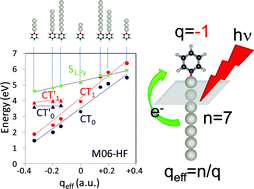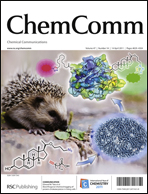Modelling the effect of the electrode potential on the metal–adsorbate surface states: relevant states in the charge transfer mechanism of SERS†‡
Abstract
Quantum mechanical calculations of the ground and excited electronic states of several [Agn–pyridine]q complexes yield a linear dependence of the energies of the surface states, especially the metal-to-molecule charge transfer states, on qeff = q/n. This is the first theoretical approach to modelling the effect of the electrode potential on

- This article is part of the themed collection: Surface Enhanced Raman Spectroscopy

 Please wait while we load your content...
Please wait while we load your content...